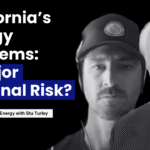Energy News Beat
Hazardous air pollutants (HAPs) regulation has recently evolved with the U.S. Environmental Protection Agency’s (EPA) recent amendments to the Clean Air Act. This new rule, finalized on August 30, 2024, aims to ‘enhance public health protections’, according to the EPA’s FAQ sheet, and ensure transparency when major sources of HAPs reclassify as area sources.
Overview of the New Rule
The EPA’s final amendments address the reclassification of major sources—those emitting 10 tons per year (tpy) or more of a single HAP or 25 tpy or more of a combination of HAPs—into area sources, which emit below these thresholds. This rule ensures that sources of persistent and bioaccumulative HAPs continue to comply with stringent emission standards, even after reclassification.
Here’s some of the important stuff
The rule targets seven specific pollutants, including alkylated lead compounds, polycyclic organic matter (POM), mercury, hexachlorobenzene, polychlorinated biphenyls (PCB), 2,3,7,8-tetrachlorodibenzofurans (TCDF), and 2,3,7,8-tetrachlorodibenzo-p-dioxin (TCDD).
Reclassified sources must adhere to major source emission standards under Clean Air Act (CAA) section 112(d)(2) or 112(d)(4), ensuring at least 90% of cumulative emissions are regulated.
The rule clarifies notification requirements for reclassifying facilities and includes minor amendments to reporting requirements for confidential business information.
Who does this rule affect?
This rule primarily impacts facilities currently classified as major sources of HAPs that are considering reclassification to area sources. Specifically, it affects facilities that emit or have the potential to emit 10 tons per year or more of any single HAP or 25 tons per year or more of any combination of HAPs. These can include, but are not limited to, the following:
Chemical plants
Petrochemical plants
Oil and gas upstream and midstream
Refining
Metal processing plants
Waste management facilities
Why was this rule put in place?
HAPs are regulated under CAA section 112 and historically, the “Once In Always In” policy required major sources to permanently comply with major source standards. This policy was withdrawn in 2018, allowing sources to reclassify as area sources. The new rule modifies the 2020 MM2A final rule, aligning with President Biden’s Executive Order 13990 to protect public health and the environment.
What deadlines do I need to be aware of?
Facilities affected by this rule must be aware of the following deadlines:
Effective Date: The rule becomes effective upon publication in the Federal Register.
Compliance Deadlines: Facilities must comply with the new notification and reporting requirements immediately upon reclassification.
The EPA continues to review other aspects of the 2023 reclassification proposal, focusing on safeguards and federal enforceability for emission limits. Make sure you’re subscribed to the Regular-atory Compliance newsletterto stay updated on all the changes.
For further details, the final rule and additional information are available on the EPA’s electronic public docket and comment system.
Take the Survey at https://survey.energynewsbeat.com/
Crude Oil, LNG, Jet Fuel price quote
ENB Top News
ENB
Energy Dashboard
ENB Podcast
ENB Substack
The post What you need to know about EPA’s latest Clean Air Act amendments appeared first on Energy News Beat.







